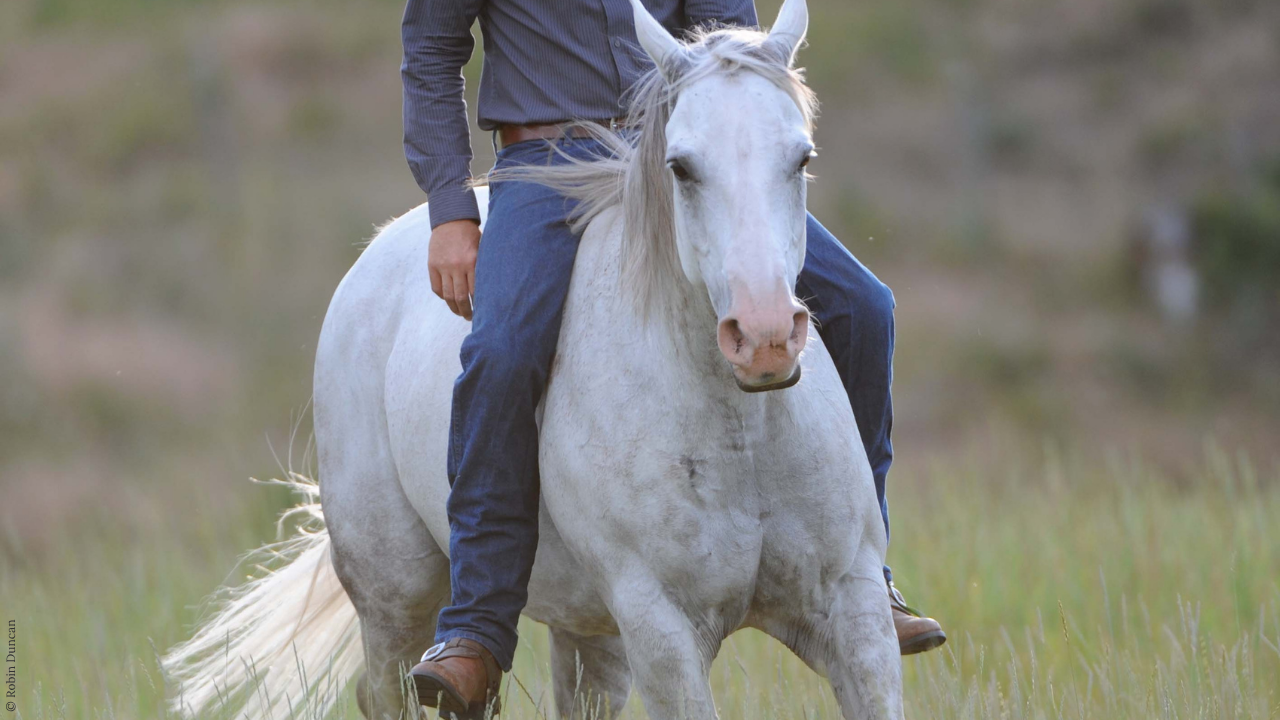Embrace The Suck: When Your Horse Humbles You

A TRUTHFUL ANSWER
You know that moment—you ask and your horse answers with the truth. Not the one you hoped for, the one you trained for.
Horses reflect their preparation. They have no interest in making our day or meeting our expectations. What’s solid shows up solid and what’s missing shows up loud.
When your horse runs around, head up, calling for a buddy or blowing past the cue, as hard as it is, that’s your program on display. They’re showing you exactly what they think of the relationship you’ve built.
Just when you think things are going well, you take them somewhere new and they point straight at the holes. It stings, and that’s the gift.
THE HARD TRUTH
You’re accountable for your horse’s education—not the trainer before you, not the breed, not the horse’s past and not the ruckus happening somewhere else on the property.
If your horse isn’t prepared for what you’re asking, that’s on you. Anxious, dull, reactive or confused isn’t attitude. It’s just feedback.
Every buck, brace or hesitation is your horse saying, “I’m not ready for this.”
Humility starts there. How you handle that moment reveals how much you truly care about horses and horsemanship.
SELF-EXAM
-
Am I upset, embarrassed or blaming—or am I owning it?
-
Did I over-face this horse today?
-
Have I truly prepared this horse—time, consistency, environment, skills?
-
Are my requests fair and consistent?
-
What’s the next smallest step that sets us up to win?
REALITY CHECK
Your horse has no vested interest in performing for you, no need to please you, no interest in how it looks. They simply respond to what they’ve learned and how they feel in that moment.
Every reaction tells you something about their understanding and confidence—not that they’re ‘being difficult’.
EMBRACE THE SUCK
Growth doesn’t come from perfect rides. It comes from the messy ones that test your patience and pride. When things fall apart, that’s where real learning happens.
Every good horseman has met that horse—the one that makes you take a hard look at yourself, question what you really know and dig deeper. It’s not easy but none of them would trade it. Those are the horses that shape you.
One of those horses for me was Quincy. A seven-year-old Arabian–Quarter Horse cross that I was told had six homes in his first seven years.
He was troubled, smart and quick to react. His out was to bolt and if that didn’t work, to rear and sometimes even flip over.
I thought I knew how to help a horse like that. Quincy made me slow down, ask new questions and learn patience on a level I’d never needed before.
Those lessons shaped everything since. I’m grateful for him now—for being uncompromising, true to his instincts and relentless in showing me where I still had work to do.
“Embrace the suck” means getting present and accepting—right now, yes, this sucks, or this isn’t what I hoped it would be. Then ask "What do I need to learn? What needs to change right now? How can I prepare better next time?"
It’s the humility to say, “I over-faced my horse.”
It’s the discipline to rebuild what’s missing—whether it’s in me or my horse.
It’s the courage to learn again without excuses or stories about how the horse “let you down.”
The horse is what they are—right here, right now. And that’s enough to teach you everything if you’ll listen.
That’s the perfection of the horse. It’s actually why I love horses more than riding quads or being a golfer. It’s that raw, primal nature that’s drawn me to horses my whole life and I’m willing to bet you have that same love of their nature.
The fact that we have to get good enough to earn it—not buy it or have it “tuned in” for us. We have to earn the skills and feel to have them look to us instead of their instincts or herd mates.
In clinics, I see riders reach that point where frustration turns into focus. They stop fighting what isn’t working and start working with what is.
From there everything changes. Their horses soften, their timing sharpens and they start to truly enjoy the process. That’s the doorway to real horsemanship.
WHERE TO FOCUS YOUR MIND
-
Drop the story. Don’t replay what went wrong. Become present instead.
-
Ask better questions. What can I do right now to help my horse?
-
Direct your energy. Put effort into the fix, not the frustration.
-
Respect the timeline. It took time to get here; it’ll take time to rebuild.
Quincy took me two years before I could ride him without that edge of risk. Even then, at big shows or in tough situations, I had to take extra time to warm him up, to focus him, to be the leader he needed that day.
That’s the reality of progress. It’s not about perfection.
THE PAYOFF
When you stay in it long enough to build real understanding, you come out with more than a better horse—you come out a better leader. The kind every horse hopes to find: fair, consistent and strong enough to listen and do right by them.
True progress hides in the simple things done well. Go back, get them right and everything else starts to work. What feels like a setback is often the start of something stronger. Each intentional step back builds the base for everything still ahead.
That’s the kind of growth that lasts—steady, earned and real.
If you’re ready to slow things down, rebuild from the foundation up and create the kind of partnership your horse can trust—start here.
Join Leadership to Partnership: Course 1





